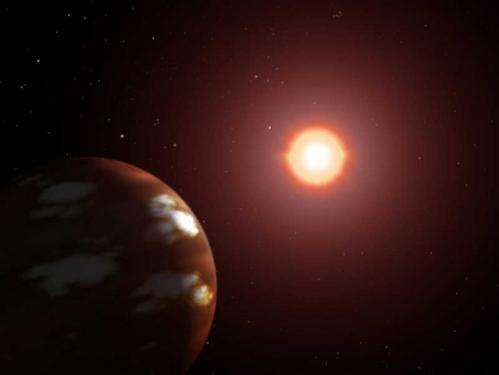HARPS tunes in on habitable planet

Using the High Accuracy Radial velocity Planet Searcher (HARPS), a team of scientists at University of Geneva, Switzerland, led by the Swiss astronomer Stephane Udry made a sound discovery… an Earth-like planet orbiting star HD 85512. Located about 36 light years away in the constellation of Vela, this extrasolar planet is one of the smallest to be documented in the "habitable zone" and could very well be a potential home to living organisms.
Circling its parent star every 54 days at about the quarter of the distance which Earth orbits the Sun, the newly discovered planet shows every sign of a temperate climate and a possibility of water. However, the rocky little world would need to exhibit some very cloudy skies to make the grade.
“We model rocky planets with H2O/CO2/N2 atmospheres, representative of geological active planets like Earth, to calculate the maximum Bond albedo as a function of irradiation and atmosphere composition and the edges of the HZ for HD 85512 b. These models represent rocky geological active planets and produce a dense CO2 atmosphere at the outer edge, an Earth-like atmosphere in the middle, and a dense H2O atmospheres at the inner edge of the HZ.” says the team. “The inner limit for the 50% cloud case corresponds to the “Venus water loss limit”, a limit that was empirically derived from Venus position in our Solar System (0.72 AU).”
But there’s always from one extreme to another when it comes to a planet being in just the right place. “The inner edge of the (Habitable zone) denotes the location where the entire water reservoir can be vaporized by runaway greenhouse conditions, followed by the photo-dissociation of water vapor and subsequent escape of free hydrogen into space. The outer boundary denotes the distance from the star where the maximum greenhouse effect fails to keep CO2 from condensing permanently, leading to runaway glaciation,” says the Kaltenegger/Udry/Pepe study.
While the whole scenario might not be exciting to some, the study is helping to lay a very solid foundation for evaluating current and future planet candidates for life supporting conditions. “A larger sample will improve our understanding of this field and promises to explore a very interesting parameter space that indicates the potential coexistence of extended H/He and H2O dominated atmospheres as well as rocky planet atmospheres in the same mass and temperature range.” says Kaltenegger. “HD 85512 b is, with Gl 581 d, the best candidate for exploring habitability to date, a planet on the edge of habitability.”
And one step closer to better understanding what’s out there...
More information: L. Kaltenegger, S. Udry, F. Pepe, A Habitable Planet around HD 85512? arXiv:1108.3561v1 [astro-ph.EP] arxiv.org/abs/1108.3561
Source: Universe Today





















